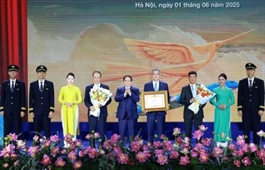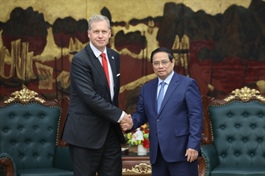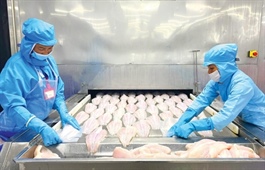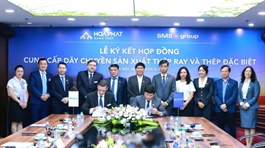SIBUR deepens footprint in Vietnam's expanding polymer sector
SIBUR deepens footprint in Vietnam's expanding polymer sector
Vietnam's rapidly growing polymer processing industry has diversified its supply chain for essential materials like polyethylene and polypropylene. While traditionally sourcing from established Asian and Middle Eastern producers, Vietnam has recently seen the Russian company SIBUR emerging as an important supplier.
In 2024, Vietnam’s polymer product manufacturing sector grew by 24 per cent, exceeding $31 billion in value.
Exports, including polymer packaging, electronic and furniture components, auto parts, and other goods, surged by nearly 27 per cent, reaching $6.6 billion.
Vietnam has established itself as a premier destination for global manufacturing, combining cost efficiency, skilled labour, and strategic trade advantages.
As multinational companies diversify their supply chains, Vietnam has become a preferred alternative, offering competitive production costs without compromising on quality or workforce expertise.
More than 4,000 companies, both local and international, are engaged in polymer-based product manufacturing in the country, seeking to minimise production costs.
Vietnam, while actively developing its domestic polymer industry, currently meets raw material needs through imports while simultaneously creating conditions for investments in local production.
Local producers such as NSRP and BSR, subsidiaries of state conglomerate PetroVietnam, along with South Korea’s Hyosung, have embraced polypropylene manufacture.
Until recently, Vietnam had no domestic polyethylene production. It was only in 2024 that Long Son Petrochemicals, a subsidiary of Thailand’s SCG Chemicals, began producing polyethylene in Vietnam.
Vietnam's rapidly expanding polymer market, with annual consumption of approximately four million tonnes of polypropylene and polyethylene, demonstrates the country's strong industrial growth and manufacturing potential.
While domestic production currently supplies nearly 30 per cent of the demand, Vietnam's open market approach has fostered a diversified and reliable international supply network, ensuring stable feedstock availability for its processing industries.
Globally, the biggest increases in basic polymer production over the past decade have come from China, the Middle East, and the United States.
Traditionally known for its oil and gas, Russia has also been investing heavily in processing these natural resources into value-added products.
Since 2010, Russia has doubled its production capacity for polyethylene and polypropylene, now reaching 5.4 million tonnes per year.

Amur Gas Chemical Complex |
SIBUR, Russia’s largest producer of polymers and rubbers, plans to launch the Amur Gas Chemical Complex (Amur GCC) in 2026, a massive new facility with an annual capacity of 2.7 million tonnes of polymers.
The project will focus primarily on polyethylene with an annual capacity reaching 2.4 million tonnes, which is in high demand across Asian markets.

Polyethylene pellets |
In particular, SIBUR plans to produce linear low-density polyethylene (LLDPE) and specialised grades of polymers for utility piping and the medical sector.
Located near the Chinese border and Russia’s Pacific ports, Amur GCC is ideally positioned to export these high-demand polymer grades to Asian countries.
One of the complex’s key advantages is its low production costs – in the first quartile of the global cost curve – which ensure competitiveness under any market conditions.
SIBUR's local partnerships also enable value-added services for Vietnam, encompassing last-mile logistics, local currency payments, and technical advisory.
- 09:35 02/06/2025
























